Blog post by Hannah Marsden
In 2009, Corinium Museum celebrated the International Year of Astronomy with an exhibition entitled, Gods and Planets, Discovering Astronomy. Part of the exhibition featured a Victorian astronomer from Cirencester called, Elizabeth Brown. At the time, nobody had really heard of Elizabeth Brown so we felt it was important to make her astronomical work known to the local community. The Royal Astronomical Society shared a photograph from their archives for use in the exhibition and a kind gentlemen loaned us her telescope, which was displayed in the exhibition. Interest in Elizabeth Brown has recently resurfaced with a play by a Stroud Theatre Group and a student, Hannah Marsden undertaking research for her Final Art Foundation project, ‘Forgotten Histories.’ Hannah has kindly written a blog post about Elizabeth Brown. Enjoy!
My name is Hannah and I am an Art Foundation student. For my final project of the course, I decided to produce some illustrated work on the topic of ‘Forgotten Histories’. After contacting the Corinium Museum and talking to Emma Stuart, I was introduced to the incredible story of Elizabeth Brown, a 19th-Century astronomer who, despite her many contributions to the field, remains a forgotten figure in history.
Elizabeth was born and raised in Cirencester in 1830. Growing up, she was an avid learner, having the dedication to teach herself much of her studies without the aid of a governess. Though a wine merchant by trade, her father pursued amateur astronomy and meteorology. He would measure daily rainfall and record sunspots, teaching Elizabeth how to observe these with his hand-telescope. His teaching sparked an interest in science for Elizabeth – an interest that would continue to grow.
As her father grew older, Elizabeth took on the domestic duties of caring for him. She also took over his meteorological measurements, recording meticulous notes and imagery every day for several years. It was only after her father’s death in 1883, when Elizabeth was freed from these caring duties, that she was able to fully pursue her passion.
Now in her 50s, Elizabeth decided to join the Liverpool Astronomical Society. The Society was swiftly gaining a worldwide reputation for excellent amateur astronomy, and was an environment in which she thrived. Soon after joining, she was appointed Director of the Solar Section, perhaps due in part to her many years of interest in sunspots. She later helped to found a new group, the British Astronomical Association in 1890, with the aim of further coordinating the research of amateur astronomers. Here, she continued to lead the Solar Section.
Elizabeth also had a strong interest in solar eclipses and aurorae, travelling widely across the world to observe these phenomenon. She travelled to Russia, Norway, Spain and the Caribbean, often recording her travels in memoir form. These notes were anonymously published in two volumes: In Pursuit of a Shadow (1887) and Caught in the Tropics (1890), both of which can be read today. They provide a brilliant insight into the life and research of a female astronomer paving her way in a male-dominated field.
Despite her talents and dedication in the field of amateur astronomy, there were some achievements that were withheld from Elizabeth as a woman. In 1892 she, alongside two other women (Annie Russell and Alice Everett), were proposed for fellowship of the male-only Royal Astronomical Society. However, none of the women were able to receive enough votes from the male members of the Society and were not elected (both Annie Russell and Alice Everett were Cambridge-educated mathematicians, only to be employed in the field of astronomy as low-paid ‘computers’). Elizabeth would go on to gain fellowship of the Royal Meteorological Society, however – an achievement that brought her great pride.
Had Elizabeth not been a woman, she would likely have had more time to dedicate towards the pursuit of astronomy, rather than having to spend the first 50 years of her life with domestic responsibilities. She would almost certainly have been elected to the male-only societies, and solidified her position in the history of British astronomy. However, she managed to achieve more in her final two decades than many amateur astronomers would have in their entire careers, and it is her unrelenting dedication and passion in her field, despite adversities, that mean that she should be remembered by us all.
Elizabeth Brown’s life was so fascinating, inspiring and rich with achievements that it was very hard for me to fit into just one project. I chose to produce some printed portraits of her at first, using a technique called ‘overprinting’ to create a layered effect:
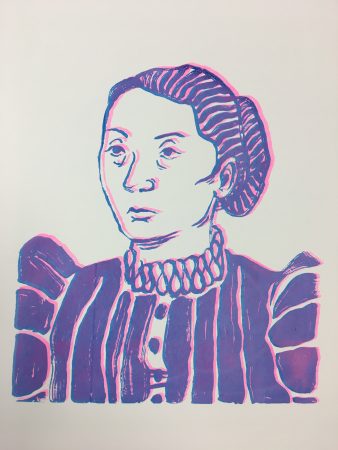
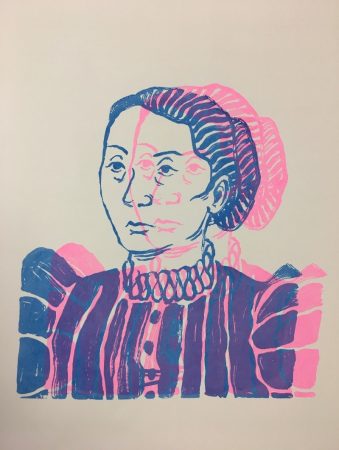
However, simple portrait prints like these don’t manage to tell you much of a story. For my final piece, I wanted to make a piece that showed a narrative of Elizabeth’s life, in order to spread her story to others who may not be aware of it. For this reason, I chose to create an 8-page zine (pronounced like the third syllable of magazine). Of course, her life was incredibly tricky to do justice in just 8 tiny pages! Below is the final zine:
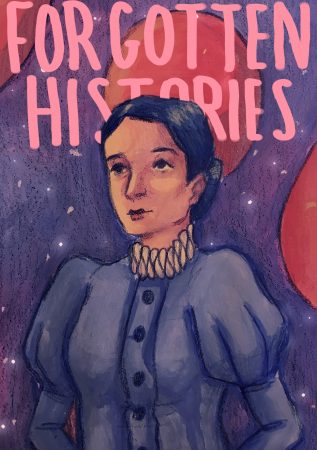
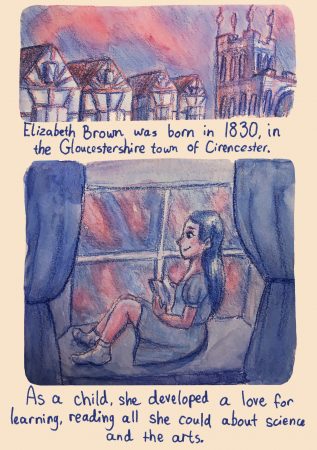
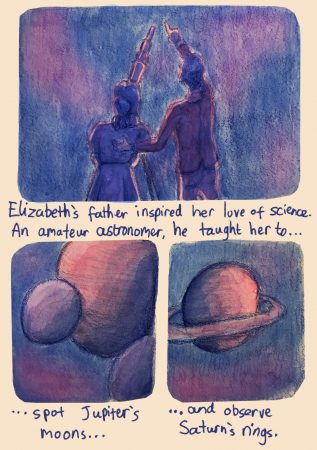


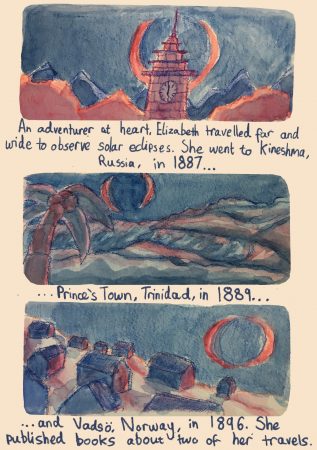

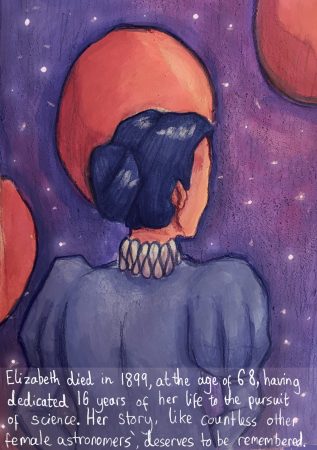
References:
http://articles.adsabs.harvard.edu/full/1998JBAA..108..193C
https://www.quakersintheworld.org/quakers-in-action/368/Elizabeth-Brown











Comments
Is it possible to visit the Quaker Church and house the Elizabeth Brown lived in?
Elizabeth Brown lived at Further Barton, Stroud Road, Cirencester, Glos. It is now part of the Royal Agricultural University.
The Friends Meeting House is in Thomas Street, Cirencester
Try http://www.quakers.org.uk then search for Cirencester.
Apologies for any errors.
You may like to know that Elizabeth Brown has just, this month, had an Asteroid named after her, as an early female astronomer – 50724 Elizabethbrown. It is an asteroid in the Main Belt, which will never come near to Earth. Two other lady English astronomers were also honoured, as mentioned above.